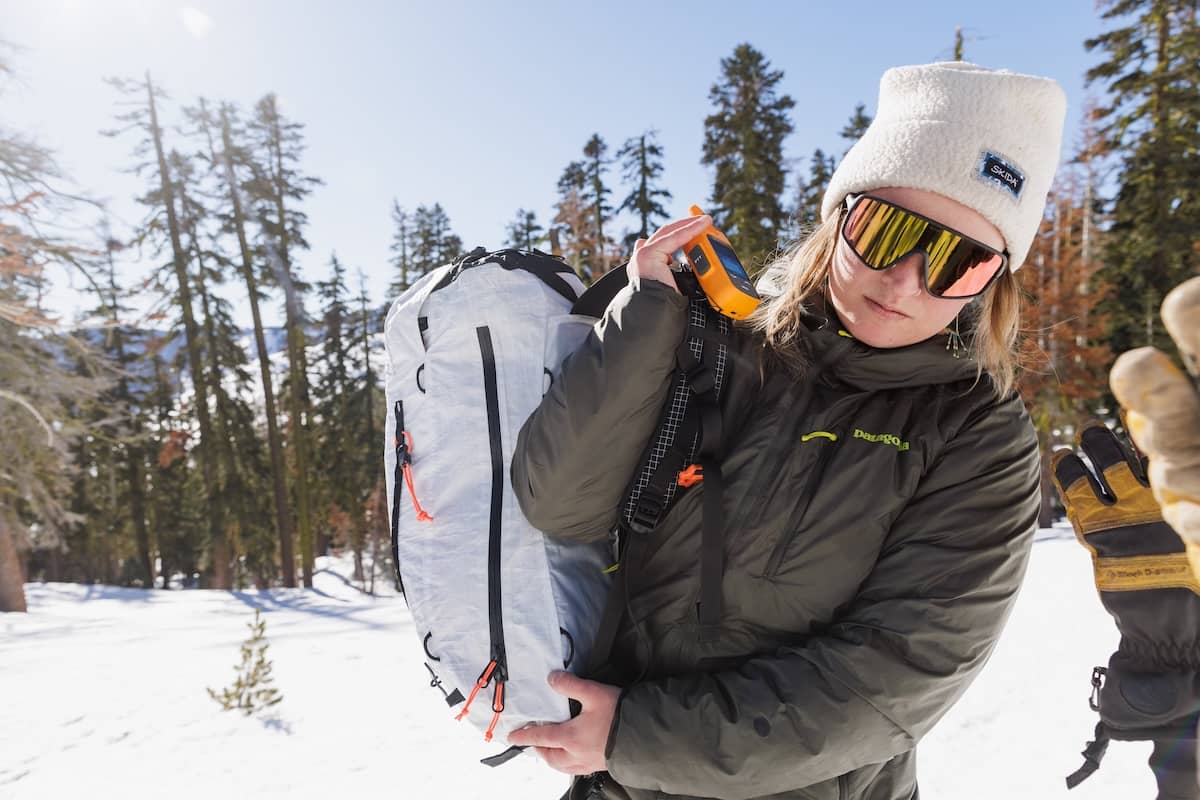
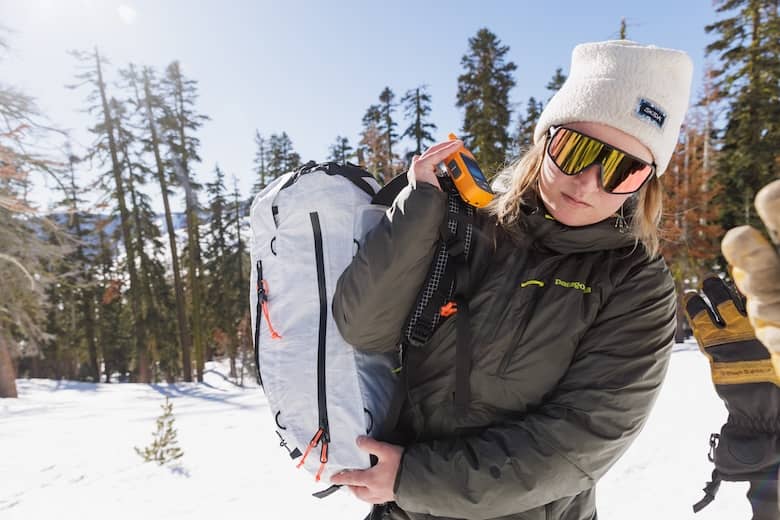
Price: $349
Weight: 11.4 oz. (women's)
Insulation: PlumaFill (65g)
What we like: Ultralight synthetic warmth with a durable and weather-protective shell.
What we don’t: Not super breathable; expensive at $349.
See the Women's Patagonia DAS Light Hoody See the Men's Patagonia DAS Light Hoody
Merging features from Patagonia’s winter-weight DAS Parka and their fast-and-light-focused Micro Puff, the DAS Light Hoody was a quick favorite among climbers and backcountry skiers when it first hit the market in 2020. Billed as an “ultralight belay hoody,” the DAS Light has quickly earned a spot in our quiver thanks to its robust and weather protective shell, great warmth for the weight, and climbing-focused features. We tested the original DAS Light in 2020 over two months of almost daily testing, and then revisited the jacket in 2025 for 6 months of further testing with the updated model. To see how it stacks up to the competition, see our articles on the best synthetic insulated jackets and best women's synthetic insulated jackets.
Editor’s note: We updated this article on September 24, 2025, with information about the 2025 version of the DAS Light. We also added new photos from testing and updated all specs and recommendations throughout.
The Patagonia DAS Light Hoody is a lightweight synthetic jacket that functions both as a midlayer (under a hardshell or rain jacket) or as a standalone piece for activities like climbing and skiing. The DAS Light features Patagonia’s proprietary 65-gram PlumaFill insulation, which has been praised for its down-like warmth, weight, and packability (in fact, Patagonia claims their PlumaFill-insulated Micro Puff offers the best warmth for weight of any jacket they’ve made). The DAS Light takes the quilted design of the Micro Puff—which helps to keep the insulation evenly distributed and lofted throughout the jacket—and pairs it with a highly weather-resistant shell (more on this below), adding an extra dose of insulation by keeping the elements at bay. In the end, it’s one of the few synthetic jackets to offer warmth on par with down jackets of its weight.
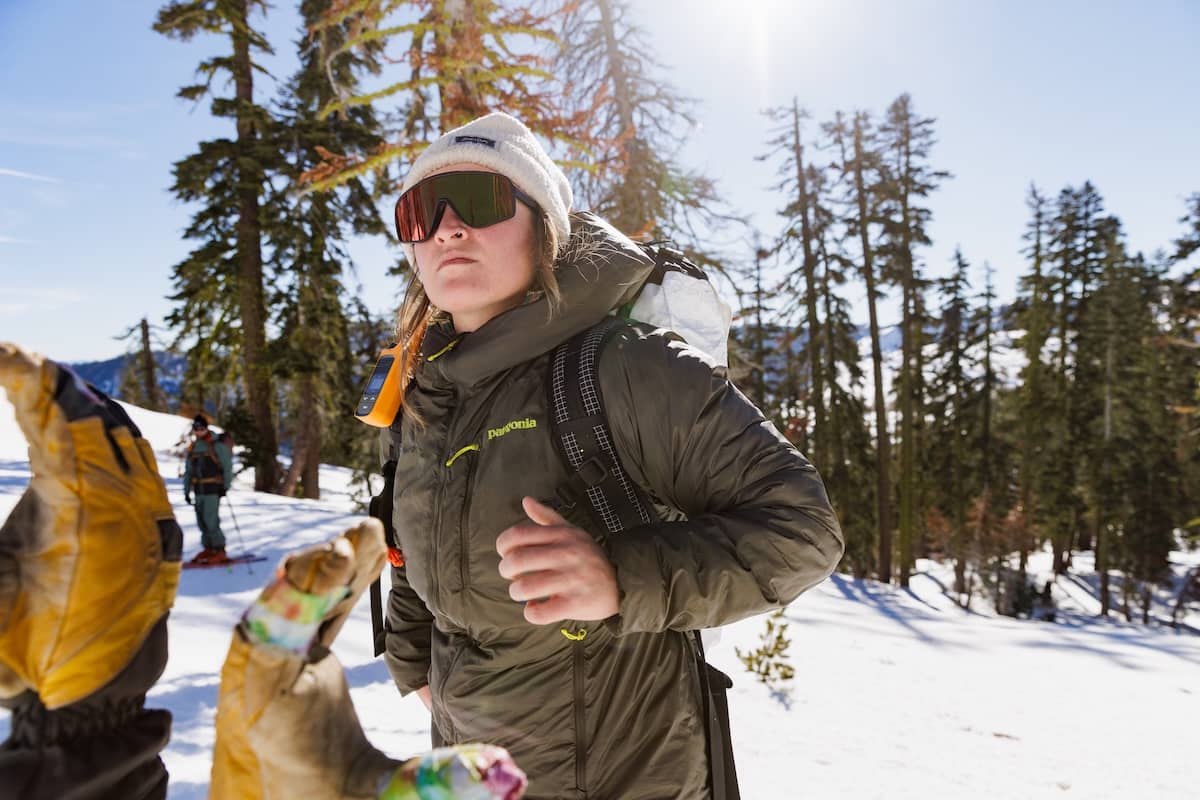
Our team tested the 2020 DAS Light Hoody throughout a chilly central Oregon fall, and it became the jacket of choice for temperatures as low as about 40 degrees Fahrenheit. We retested this jacket in 2025 and often pushed into even colder temps while out skiing. That said, if you want to do this, be sure you plan to stay on the move and have a heavyweight baselayer on underneath. With that combo, this is a pretty ideal companion on a hike with a below-freezing windchill (though you'll likely want to keep things like stopping for a lunch break to a minimum). Overall, held up to other lightweight synthetic jackets, the DAS Light Hoody offers slightly more warmth than popular models like the Arc’teryx Atom LT Hoody and Rab Xenon, and impressively does so at a lighter weight.
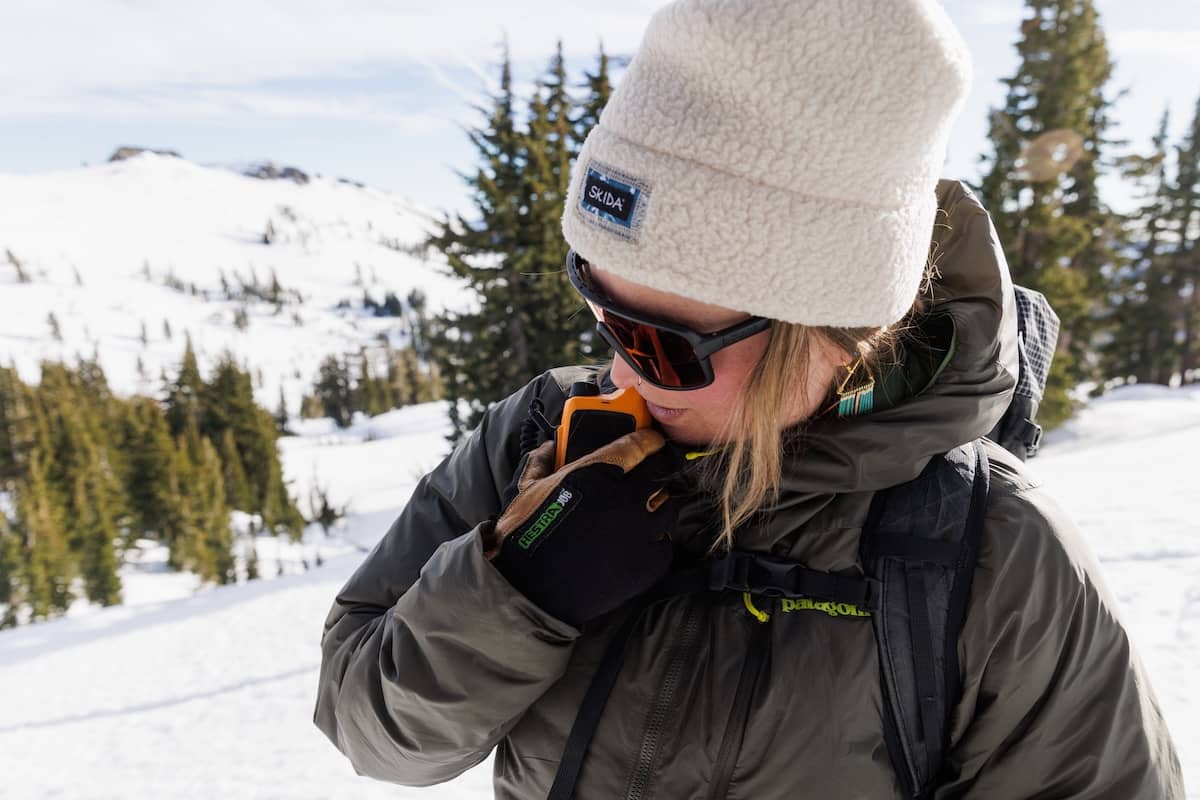
Climbers, skiers, and winter hikers often prefer synthetic insulation over down due to its ability to insulate when wet, and the DAS Light’s PlumaFill is a solid performer in this sphere. But more noteworthy is the jacket’s baffle-less Pertex Quantum Pro shell, which is one of the most wind- and water-resistant materials we’ve tested (among non-waterproof options, that is). Quantum Pro is Pertex’s premium fabric for “extreme conditions,” featuring a polyurethane coating and a DWR finish that causes water to bead up and roll off rather than soak through. To top it off, you also get a Pertex Quantum liner fabric (no “Pro”), similar to the shell fabric used on the Patagonia Micro Puff. The end result is one of the most weather-resistant synthetic jackets on the market, on par with offerings like the alpine-ready Patagonia DAS Parka and Black Diamond Solution 4.0 Parka, and head and shoulders above competitors such as the Arc’teryx Atom LT.
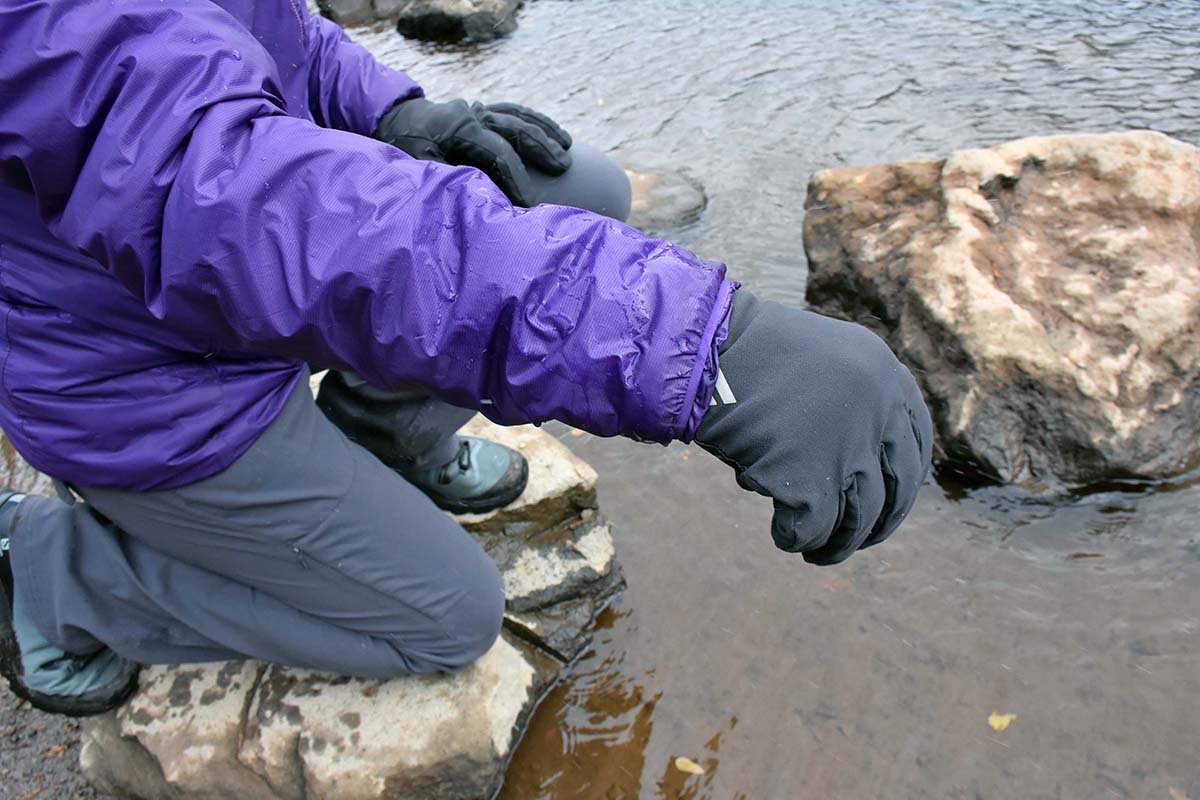
Throughout shoulder-season testing, we've been very impressed with the performance of the DAS Light Hoody in both wind and rain. Though only 10 denier, the outer shell has a substantial feel and can be trusted in light moisture and in lieu of a windbreaker jacket. We were once caught in a soaking rain on a hike, and the moisture never seemed to make its way past the shell to the insulation. But if you anticipate heavy precipitation or expect to be out for a while, this jacket is no substitute for a waterproof rain jacket or hardshell (although it will layer nicely underneath either of those).
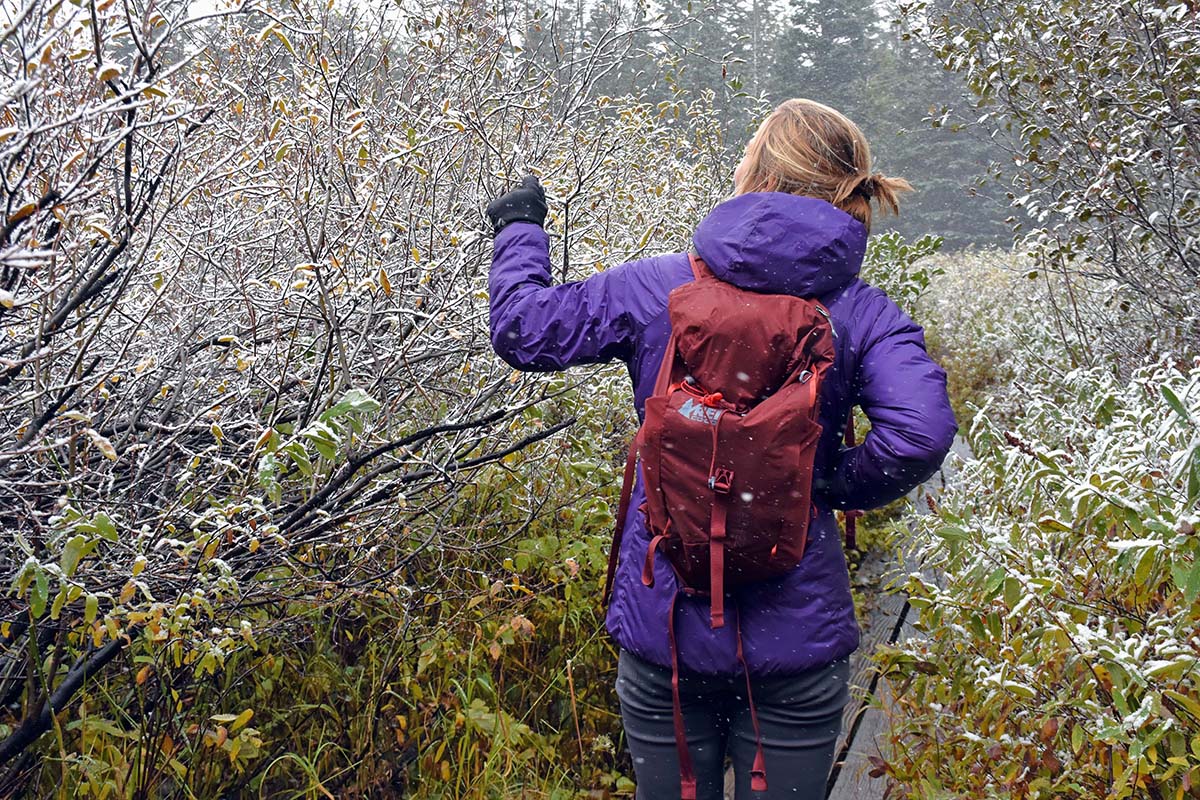
Synthetic insulated jackets can be a mixed bag in terms of breathability, with models like the Patagonia Nano-Air (debuted with the slogan “put it on, leave it on”) leading the charge and more weather-ready designs bringing up the rear. True to form, the DAS Light Hoody is not particularly breathable due to its wind- and water-resistant shell and liner. Over our years with this jacket, we've worn it cross-country skiing, during brisk hikes, skinning uphill while backcountry skiing, and even rock climbing, and, no matter who was testing, as heart rates rose and bodies built heat, we needed to remove the DAS Light to remain comfortable. If you’re looking for a jacket that you can wear during activity, the less weather-resistant Patagonia Nano-Air and Arc’teryx Atom SL are better options.
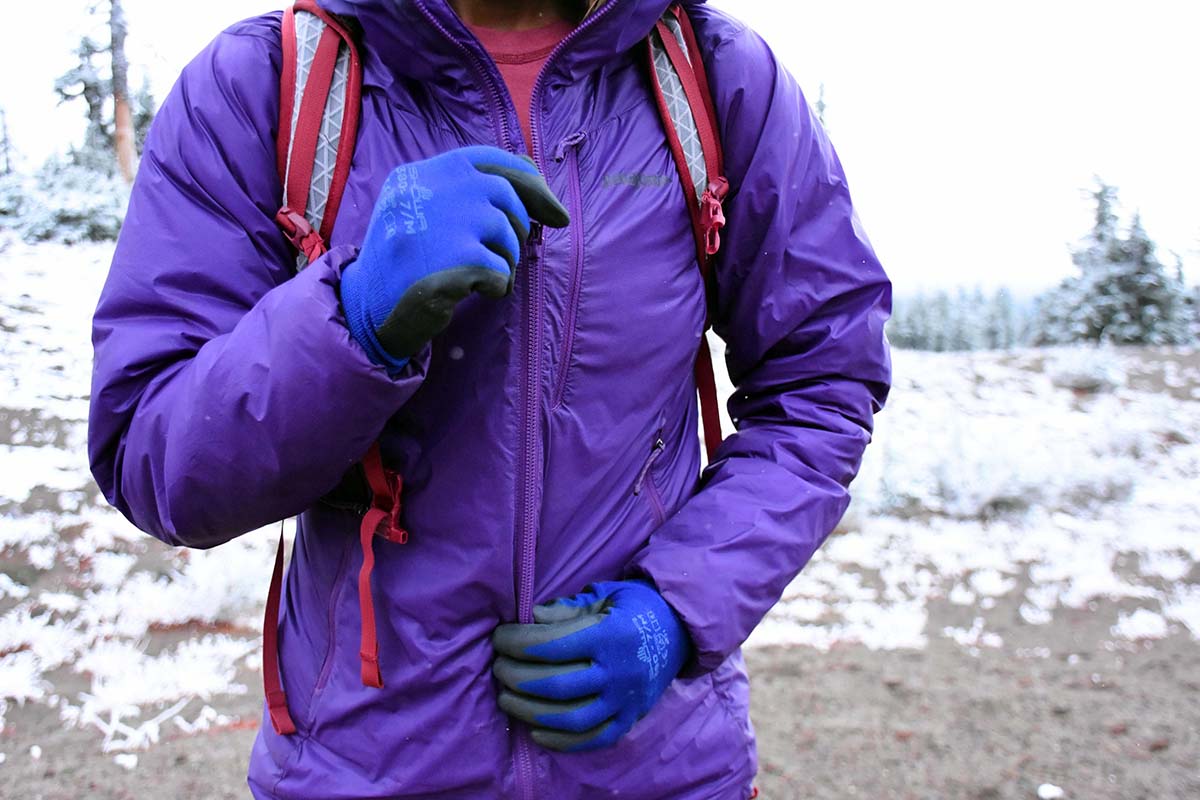
The DAS Light Hoody clocks in at 11.4 ounces for the women’s version and 12.2 ounces for the men’s, which puts it on the lighter end of the spectrum among synthetic jackets of similar warmth. For comparison’s sake, the ultra-minimalist Patagonia Micro Puff Hoody weighs 9 ounces for the women’s version, and popular jackets like the Patagonia Nano-Air Hoody and Arc’teryx Atom SL Hoody weigh in at 12.4 ounces and 8.5 ounces, respectively. That said, none of these models can match the weather protection of the DAS Light. You could shave more weight with a less protective fabric, slimmer fit, and fewer features (like the Micro Puff), but we think that the DAS Light Hoody strikes a nice middle ground between weight savings and functionality.
In terms of packability, the DAS Light Hoody is now designed to stuff into its left front chest pocket, which it does relatively easily. In the 2020 version, it was meant to stuff into the left handwarmer pocket, but unfortunately the pocket was prohibitively small. We couldn’t pack the entire jacket in and get the zipper closed, which was a big bummer for climbers who like to pack their belay jackets while leading the next pitch. Many climbers had issues with this feature, and Patagonia listened and evolved (more on this theme below). The DAS Light is now quite compressible (its packed size is roughly the shape of a 32-ounce Nalgene), and easily disappears into a corner of a backpack. For comparison’s sake, the Nano-Air packs up to about the same size and the Micro Puff is slightly smaller.
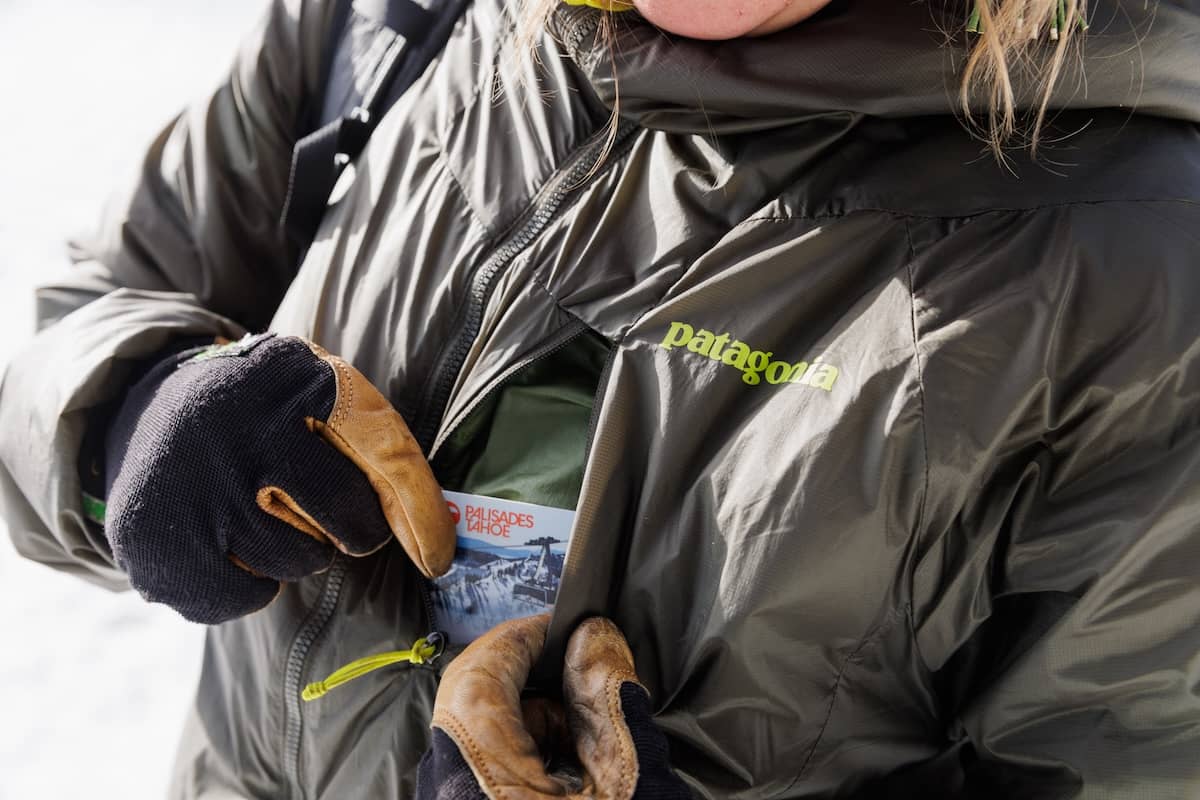
With the DAS Light Hoody, Patagonia set out to make a jacket that was both ultralight and fully functional as a belay parka, which is a tall order. In the end, the design strikes us as incredibly intentional with two large improvements in the updated model. The DAS Light features an adjustable, helmet-compatible hood, that secures to the head via a simple rear pull, and we especially love the elastic gasket that keeps cold air out at the front. You also get low-profile, elasticized cuffs, three external zippered pockets (two handwarmers and one chest), and an extremely nifty two-way front zip with an internal wind flap. We find the two-way zip almost indispensable when wearing the jacket with a harness, and are happy to see that Patagonia included it in the current design. Trying to access a belay loop comfortably without this feature usually results in having to pull up the jacket and lose important warmth.
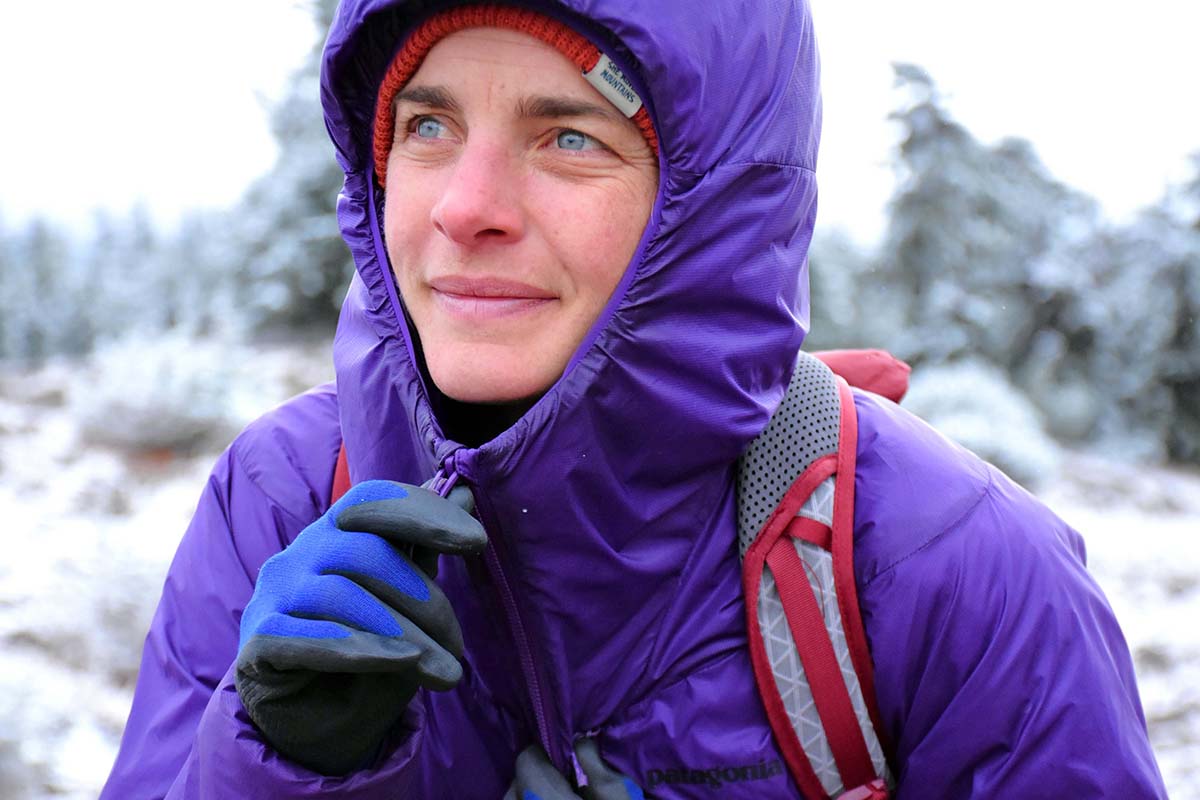
Our first test of the 2020 DAS Light Hoody left us missing two main features: internal dump pockets and an adjustable hem. Since Patagonia continues to take feedback and further evolve its gear, the newest edition of the jacket has both. While ice or rock climbing, dump pockets are essential for warming gloves or climbing shoes close to the body, and when on a ski tour, we consistently reach into the jacket’s large dump pocket to dry our uphill gloves or skins.
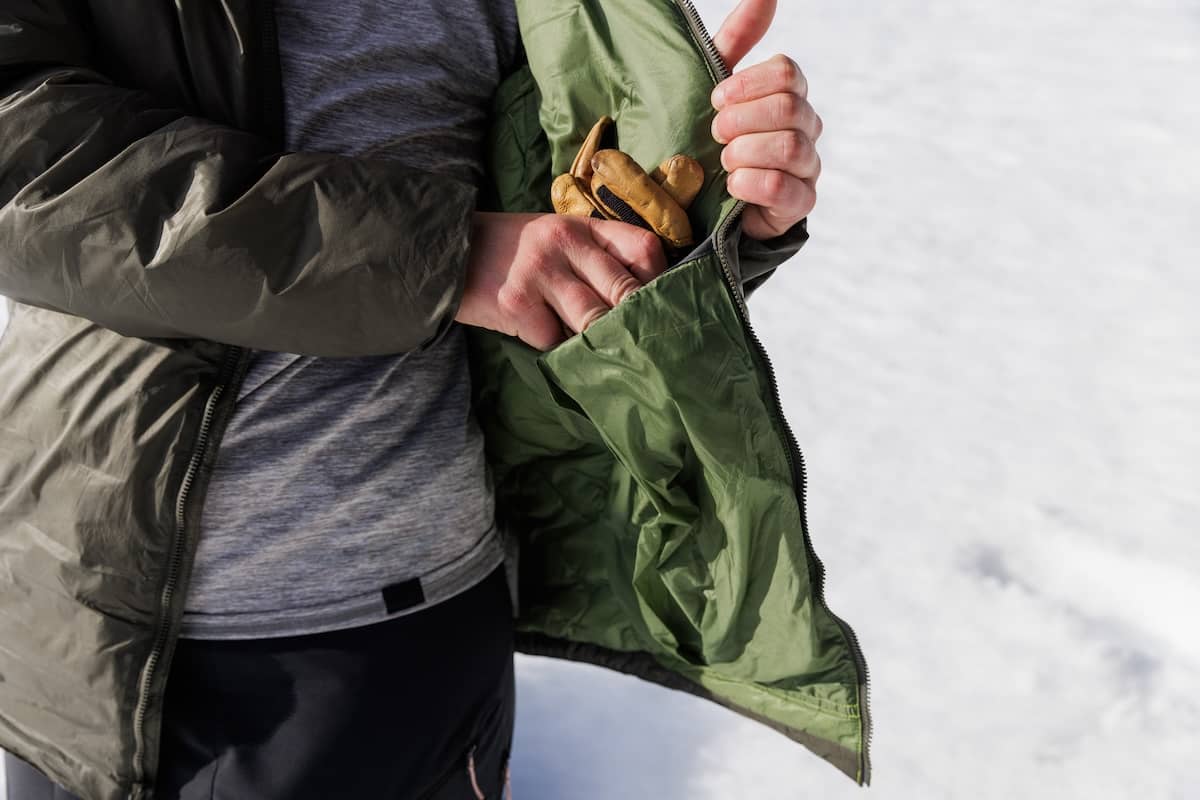
As for the hem, the 2025 DAS Light now features a cinch draw cord at the waist hem that is very effective at keeping warmth sealed in and the jacket close to the body. Both the waist and the shell itself keep wind out exceptionally well. We expect the DAS Light to be in Patagonia’s lineup for a long time to come, and are excited to see prior concerns we had with the jacket addressed. We’re sure more improvements will come in the future.
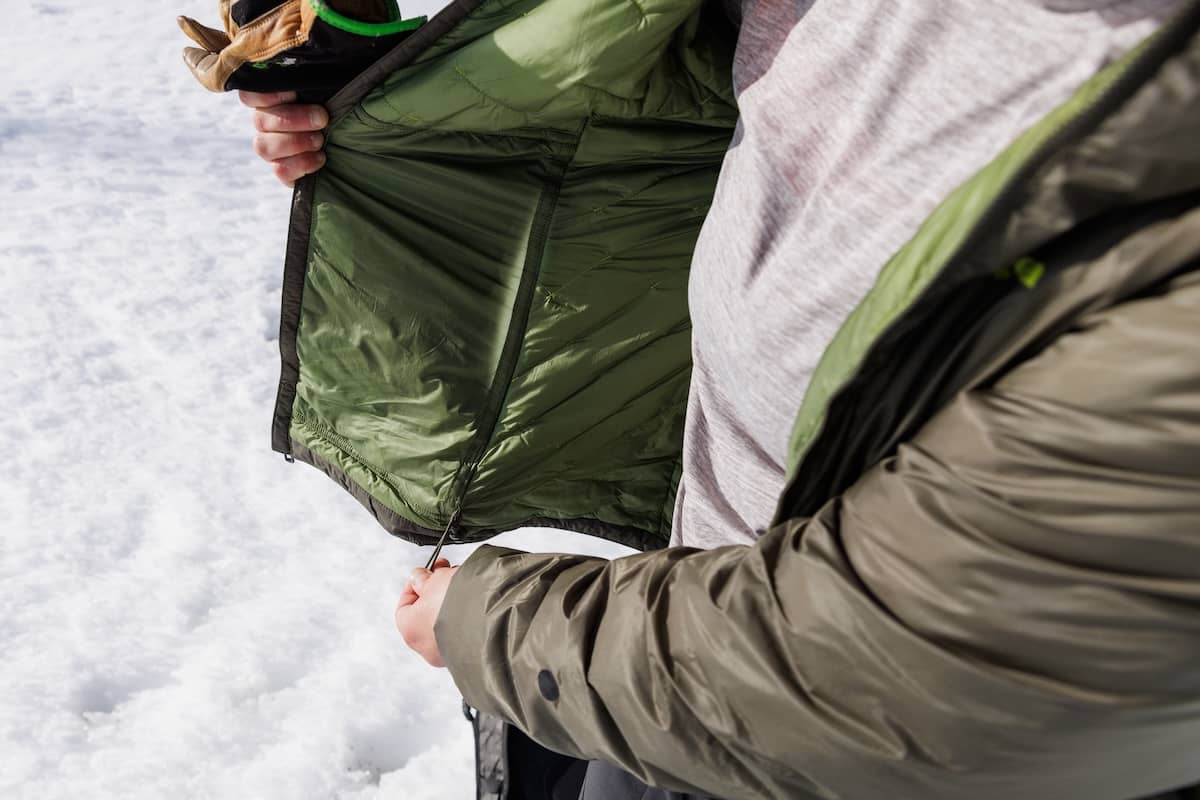
Like everything that Patagonia makes, the DAS Light Hoody is constructed with premium materials and built with a keen attention to detail. The jacket features a sleek 10-denier Pertex Quantum Pro shell (with a polyurethane coating for extra abrasion resistance) and a 10-denier Pertex Quantum quilted liner (similar to the external construction of the Micro Puff). While thin (most synthetic jackets use 20D or thicker shell fabrics), the DAS Light feels sturdy for its thickness—ours remained largely intact over the rock of the Cascades and Yosemite. However, we were able to rip several holes in the shell in a uniquely trying situation: scuffing and shimmying our way up a scrambling circuit in the Eastern Sierra’s Buttermilks, which has some of the most abrasive rock you’ll be able to find in North America.
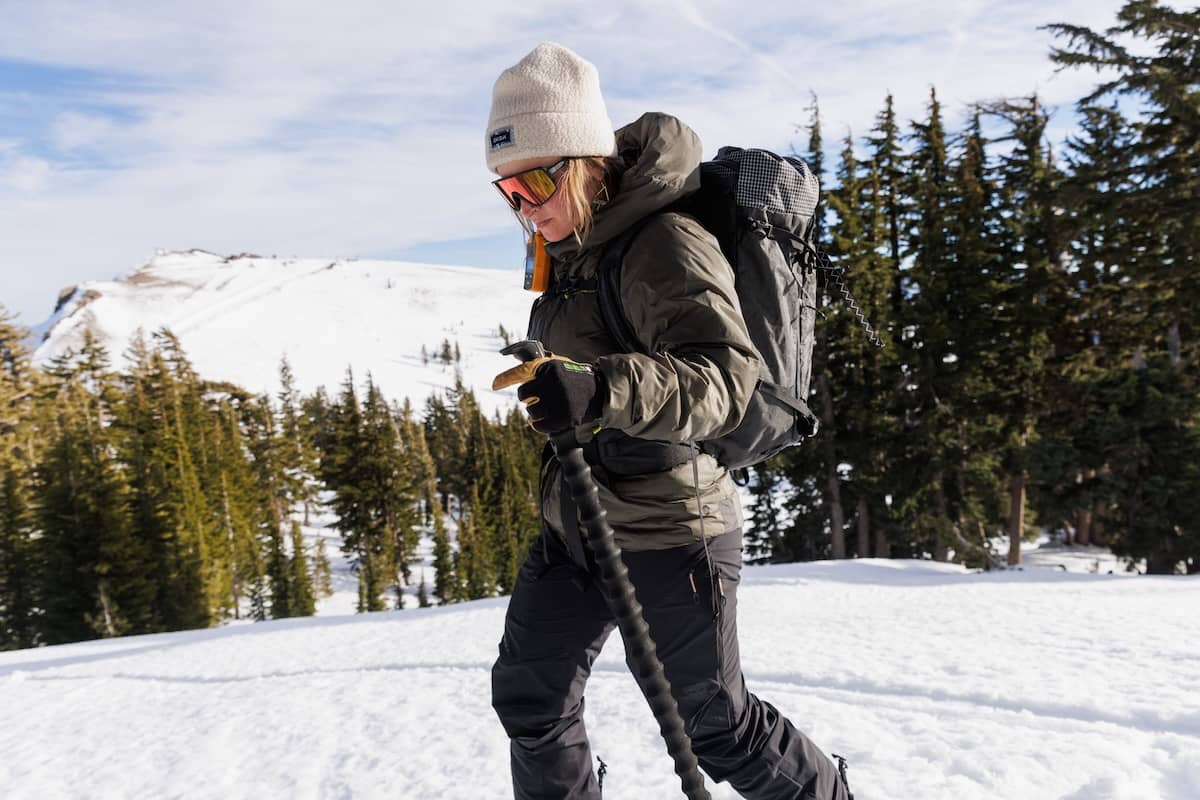
These holes were easy to patch with some gear tape, and the jacket didn’t lose any insulation. We’ve been impressed with Pertex’s Quantum Pro on the whole, and expect the DAS Light to hold up very well over time. In the same thread of repairing, it’s worth noting that Patagonia has their WornWear program, offering more than 100 guides on how to DIY repair your gear. You can also mail in a piece for repair, or, if you live near a store, you can bring your piece in, and they’ll help out with a small repair in person.
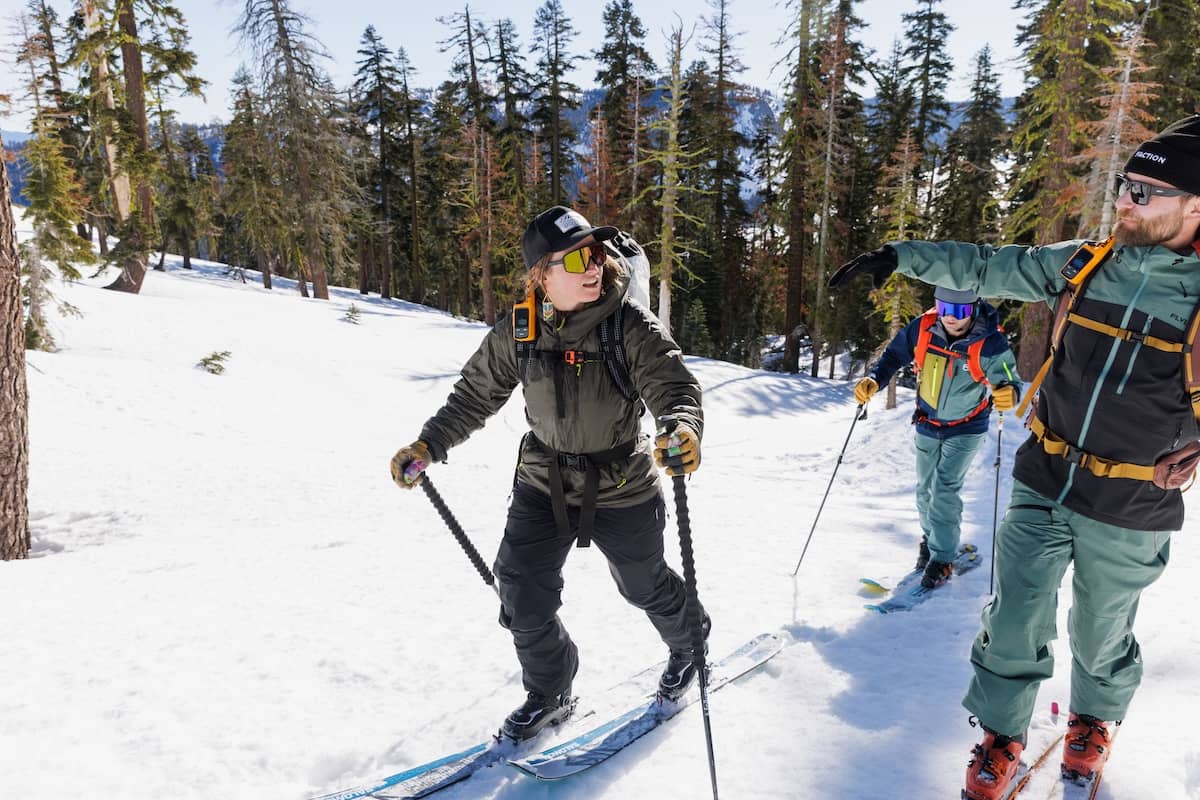
Despite its ultralight intentions, the DAS Light Hoody features a relatively relaxed fit. Our previous tester for the 2020 version, Jenny, is a standard size small in jackets from brands like Arc’teryx, REI, and Black Diamond, and the Patagonia here is no exception. With great freedom of movement, the DAS leaves ample room for a baselayer or fleece jacket underneath, yet is still sleek enough to wear under a hardshell or rain jacket. It also features a generous hem length that falls nicely below the hips and offers great coverage when bending over or wearing over a bulky climbing harness.
On the other hand, our 2025 tester, Brooke, is usually a size small but sometimes will size up depending on the brand due to having a larger chest and hips. She wears a size small in a lot of Patagonia layers, like the Fitz Roy and R1 Tech Face, but needed a medium for the DAS Light due to tightness in the chest. This provided extra room in the chest area, but left additional material above her hips in the torso, as she's only 5'2". She still found the jacket comfortable and functional, but not as sure of a fit as other pieces from Patagonia (for example, she still prefers a small in the DAS Parka). Our only complaint about Patagonia is that women’s sizing for different body types is a bit all over the place, depending on the piece.
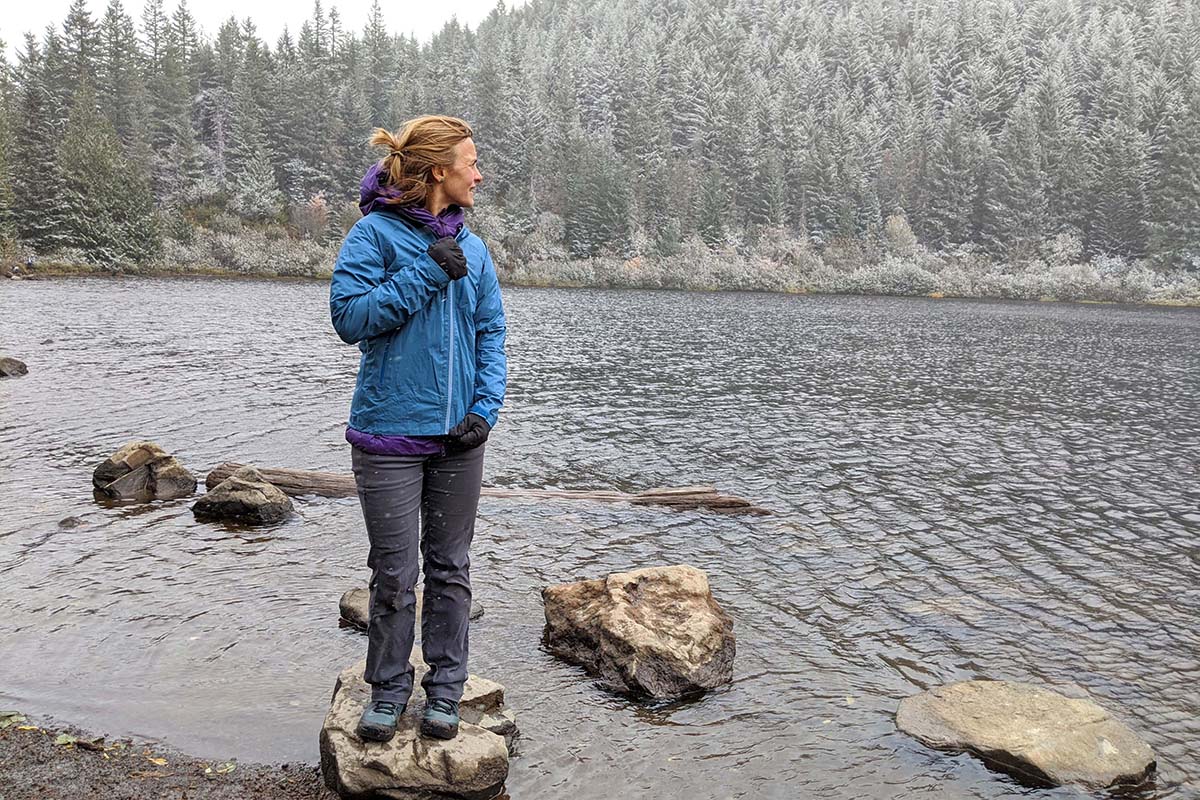
Like most of Patagonia’s products, the DAS Light Hoody is made with an attention to ethical and environmentally friendly sourcing and production. The jacket is sewn in a Fair Trade Certified factory, which means that workers are treated fairly and paid living wages, and the PlumaFill insulation is built using 100-percent recycled polyester. Patagonia has also been working towards creating a DWR that’s free of PFAS, which they have now employed on all their gear as of spring 2025. Finally, Patagonia’s Worn Wear repair and trade-in programs help you keep your gear ready for the next adventure.
For this review we tested the women’s Patagonia DAS Light Hoody, but Patagonia also makes a men’s version. The men’s DAS Light Hoody is identical to the women’s jacket in terms of price, materials, and features. It’s also worth noting that the DAS Light is a spinoff of Patagonia’s classic DAS Parka, a winter-weight belay jacket that features a similar shell and includes a generous dose of 133-gram PrimaLoft insulation for more warmth and loft. The women’s DAS Parka (reviewed here) tips the scales at 1 pound 2.4 ounces and retails for $449.
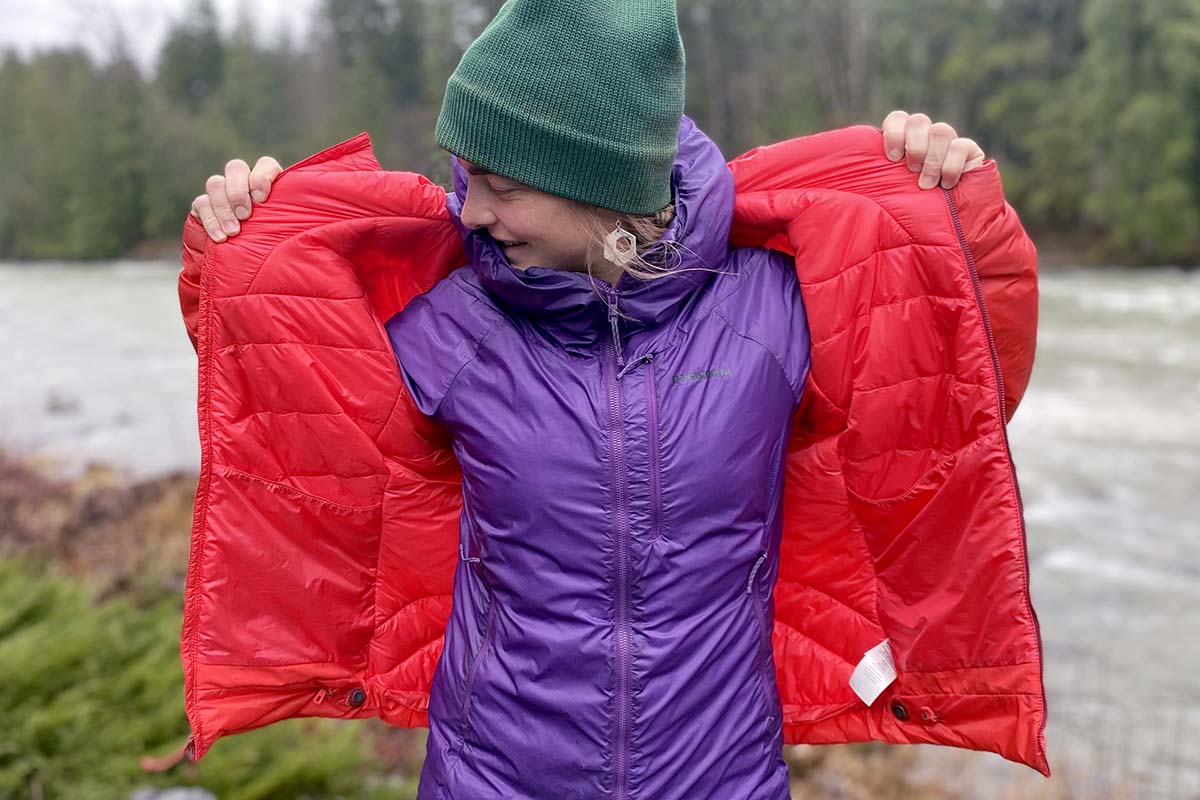
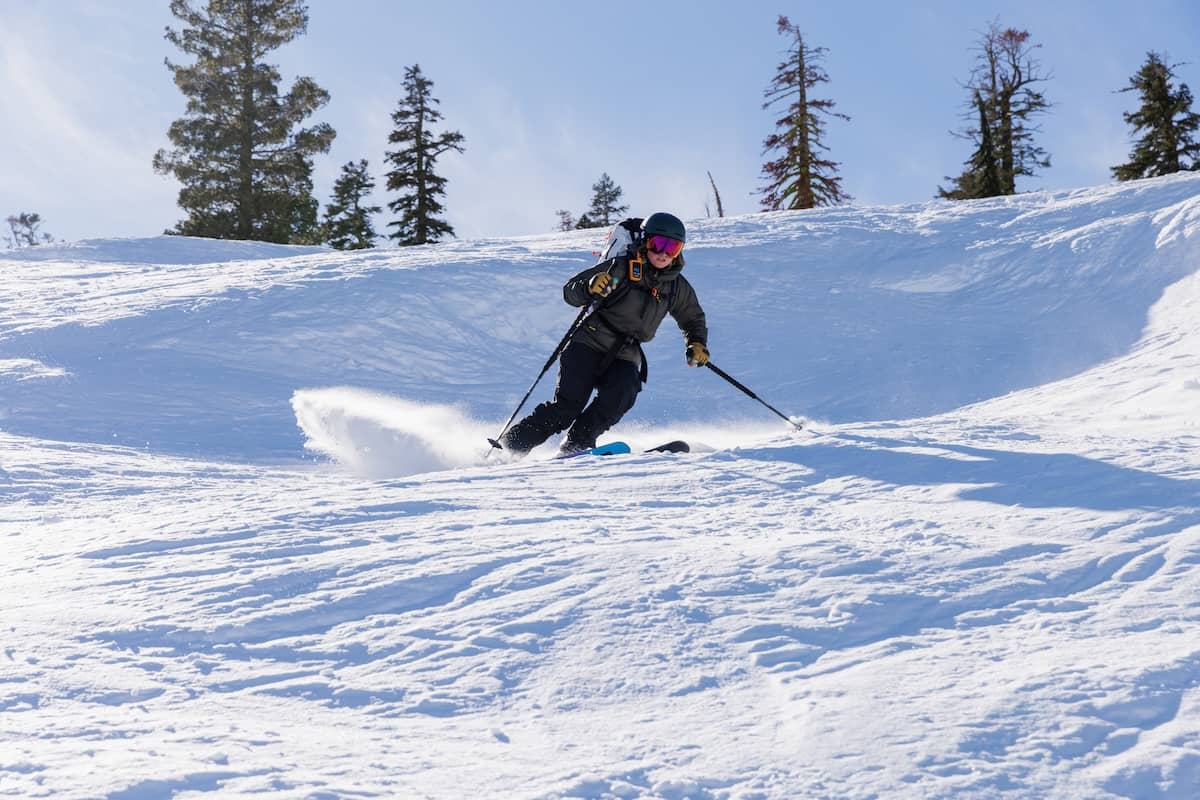
| Jacket | Price | Weight | Insulation | Shell Fabric | Packable? |
|---|---|---|---|---|---|
| Patagonia DAS Light | $349 | 11.4 oz. | PlumaFill (65g) | 10D Pertex Quantum Pro | Chest pocket |
| Arc'teryx Atom SL | $280 | 8.5 oz. | Coreloft Stretch (40g) | 20D Fortius Air | No |
| Rab Xenon 2.0 | $195 | 13.6 oz. | Atmos (40g) | 30D Pertex Quantum | Inner chest pocket |
| Patagonia Micro Puff | $329 | 9.0 oz. | PlumaFill (65g) | 10D Pertex Quantum | Hand pocket |
| Patagonia Nano-Air | $329 | 12.4 oz. | FullRange (60g) | 30D shadow stretch ripstop | Chest pocket |
Patagonia describes the DAS Light Hoody as an ultralight belay hoody, placing it within a small class of climbing-focused synthetic insulated jackets. Its biggest competition comes by way of Arc’teryx. Trending toward the casual end of the spectrum, the Arc’teryx Atom SL Hoody is hard to beat. With a softer shell fabric and stretchy fleece side panels, the Atom SL excels in the comfort department and works well for everyday use. It’s also a good breather, making it a better choice than the DAS Light for activities like hiking, snowshoeing, and cross-country skiing (in clear weather). While the two jackets are fairly similar in terms of warmth, the Atom SL’s outer shell is not built to resist moisture like the DAS Light’s, and its side panels make it more permeable to wind. Further, at just 8.5 ounces (though with a less packable design), it’s a decent choice for weight-conscious missions like climbing, skiing, or even backpacking. The Atom SL is hard to beat for less technical uses and casual wear, and it doesn’t hurt that it’s cheaper than the DAS Light.
Another jacket to consider is the Rab Xenon 2.0, which also features a sleek shell with minimal stitching and a decently light build (13.6 oz.). On paper, the Xenon 2.0 is a bit more robust than the DAS Light with a 30-denier Pertex Quantum shell, which is the same material as the DAS Light but with a higher denier. That said, the Xenon 2.0 can’t match the warmth of jackets like the DAS Light, and its build is roomy and not great for technical pursuits (we’ve snagged the extra fabric on rocks). But the Rab is considerably cheaper than the DAS Light, and a nice option for those looking for a synthetic jacket with a slight step up in weather protection from models like the Atom SL and Nano-Air.
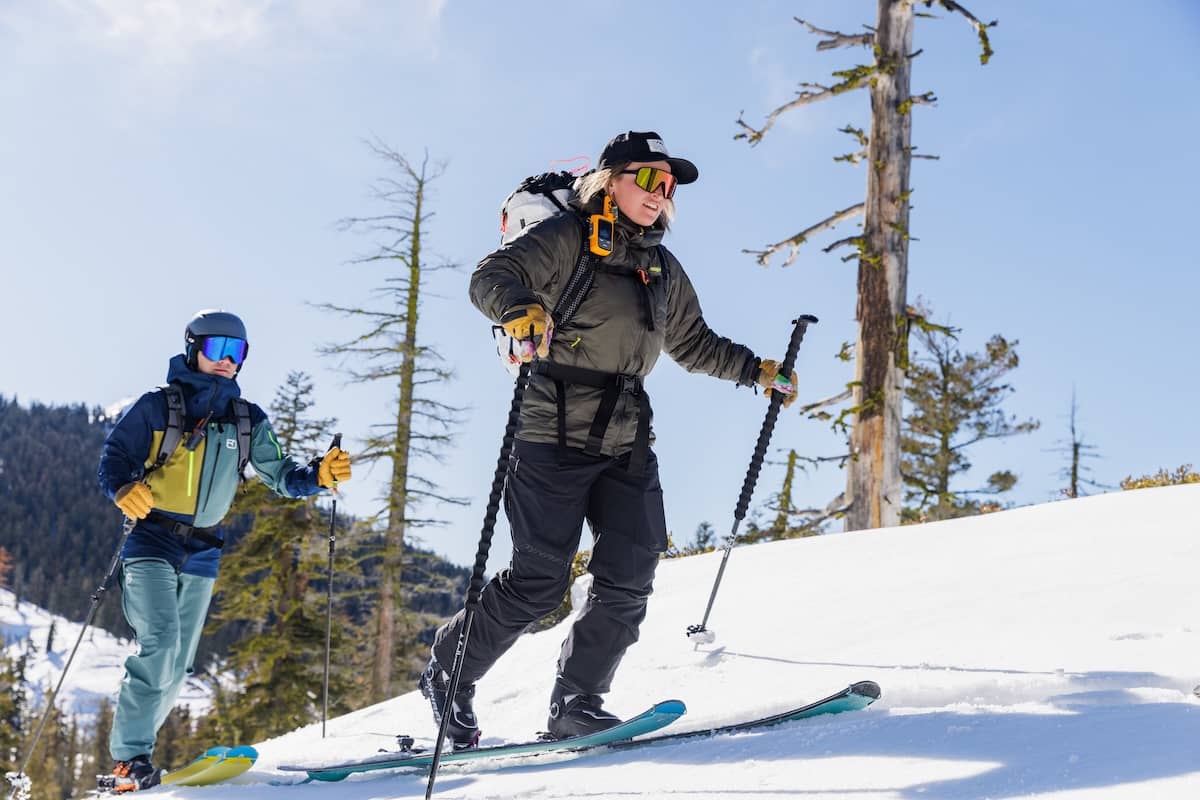
We’d be remiss not to mention the Patagonia Micro Puff Hoody here, which feels like a predecessor to the DAS Light in many ways. The Micro Puff is an ultralight synthetic jacket with the best warmth-to-weight ratio in Patagonia’s lineup—but it’s a wildly minimalist piece. You get the same amount of PlumaFill insulation as the DAS Light in a 9-ounce package, but the Micro Puff lacks the DAS’s durability and weather protection. It’s also very streamlined in terms of features, with a non-adjustable hood that fits best underneath a helmet, two handwarmer pockets (no chest pocket), and two internal dump pockets. The Micro Puff might still appeal to the most weight-conscious of folks, but for just a bit more money and 2.4 ounces more weight, the DAS Light Hoody is a much more well-rounded jacket, especially for wet and windy conditions..
Finally, the Nano-Air is another synthetic jacket from within Patagonia’s own lineup. Like the Arc’teryx Atom SL, the Nano-Air prioritizes comfort and breathability over the weight savings and weather protection of the DAS Light. With a durable yet air-permeable 30-denier shell, the Nano-Air Hoody is even more breathable than the Atom SL and keeps weight decently low at 12.4 ounces (not to mention it packs into its chest pocket to about the same size as the DAS Light). This makes it a great option for a variety of activities, including climbing, but keep in mind that you don’t get features like a helmet-compatible hood, two-way zipper, or internal dump pockets. In the end, we reach for the Nano-Air if we want a breathable, highly mobile layer that we can put on and keep on during cold-weather activities, but prefer the DAS Light for more technical pursuits and when the weather goes south.
Back to the Patagonia DAS Light Hoody Review See Our Women's Synthetic Insulated Jacket Guide